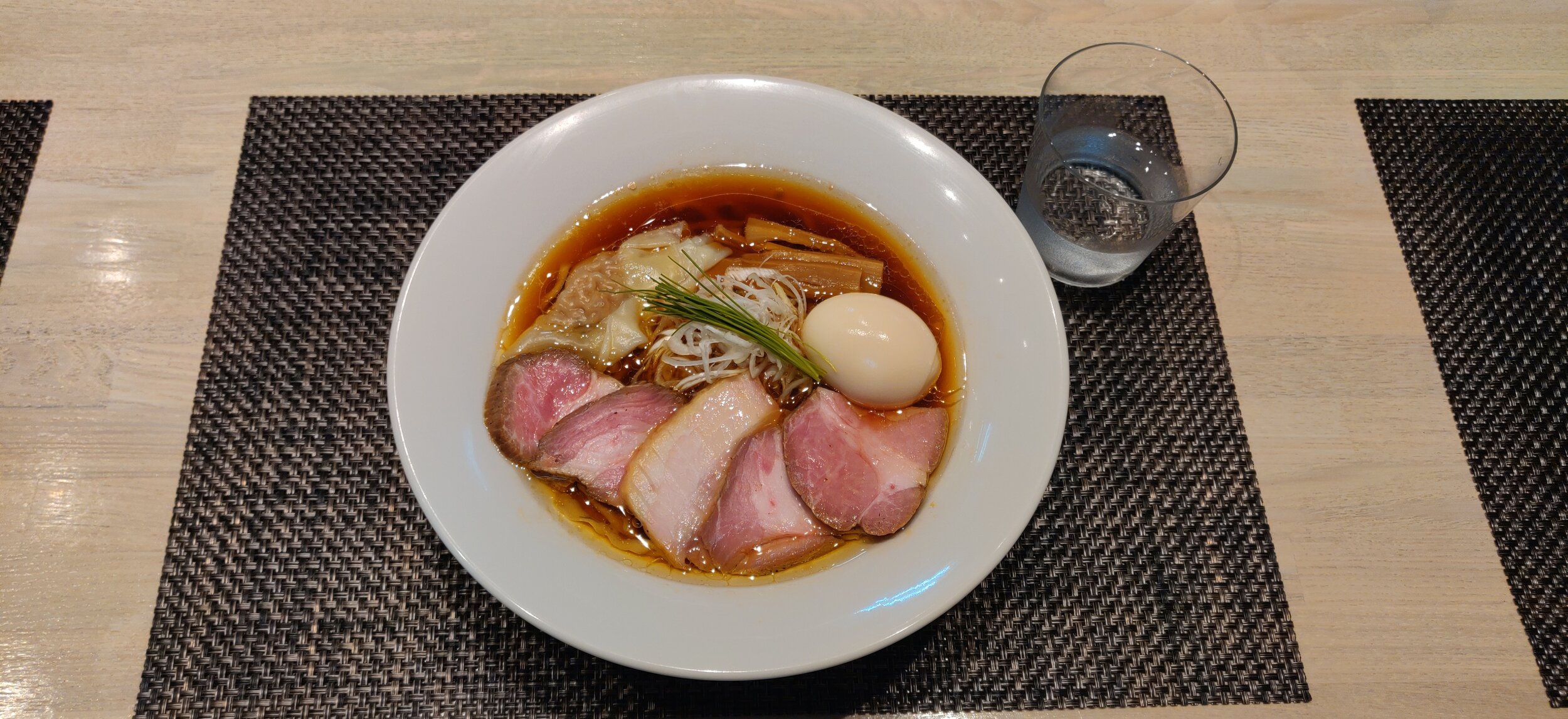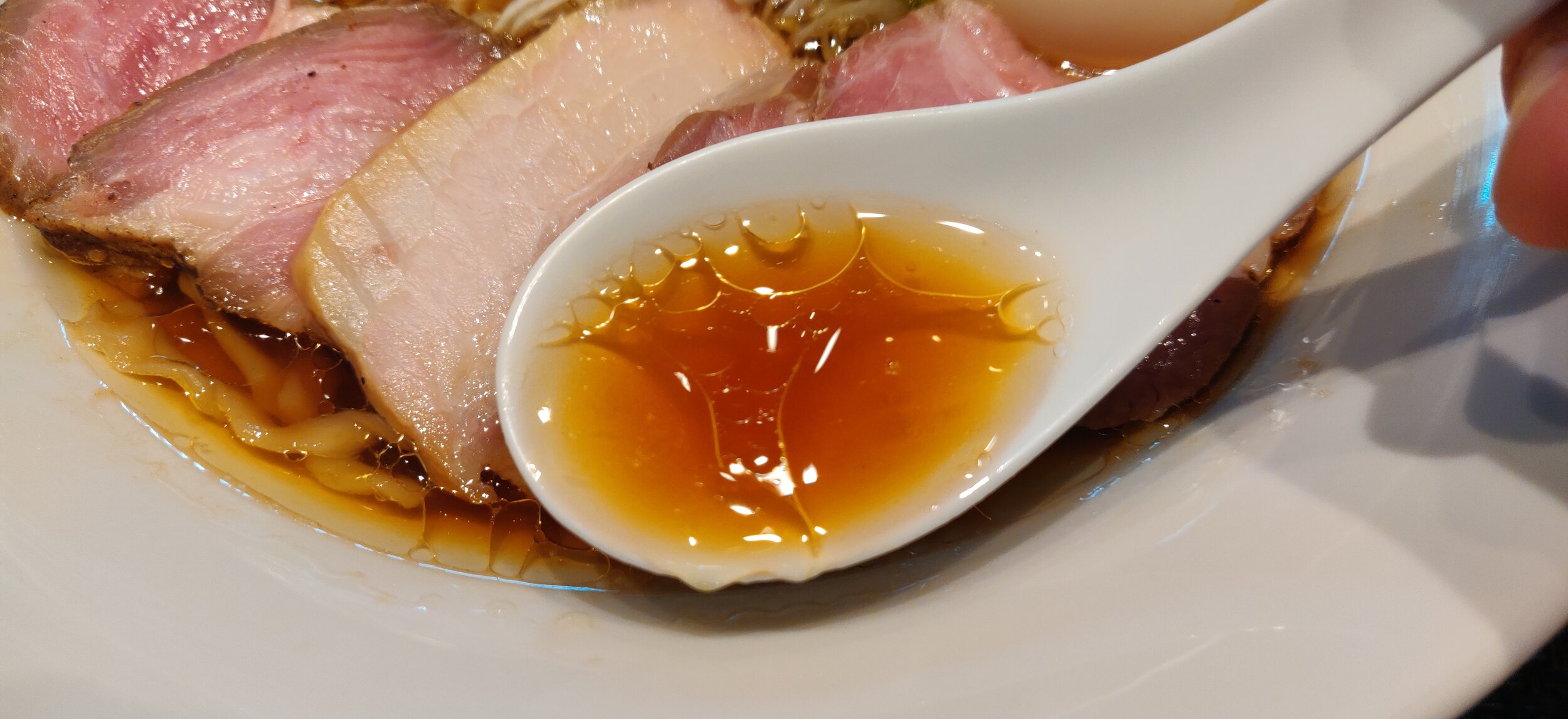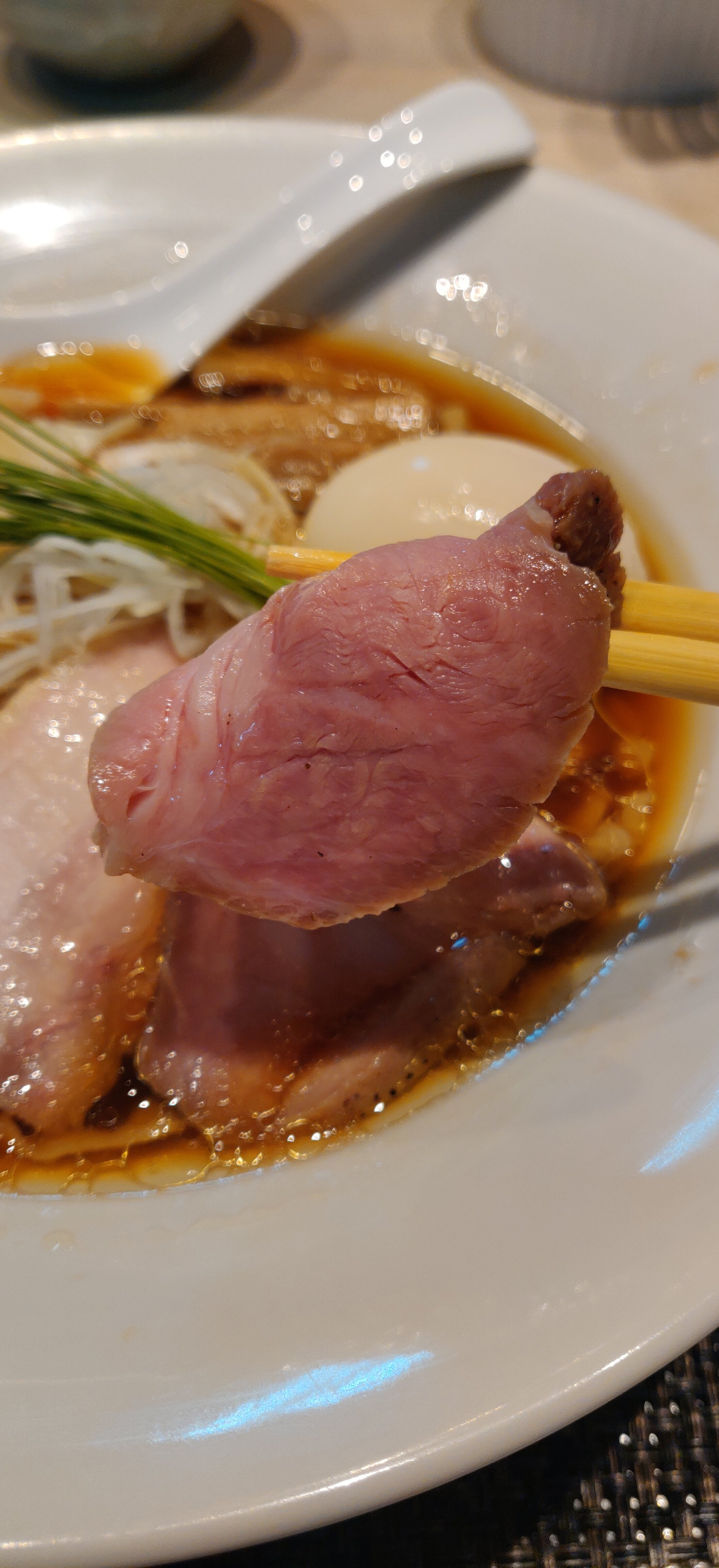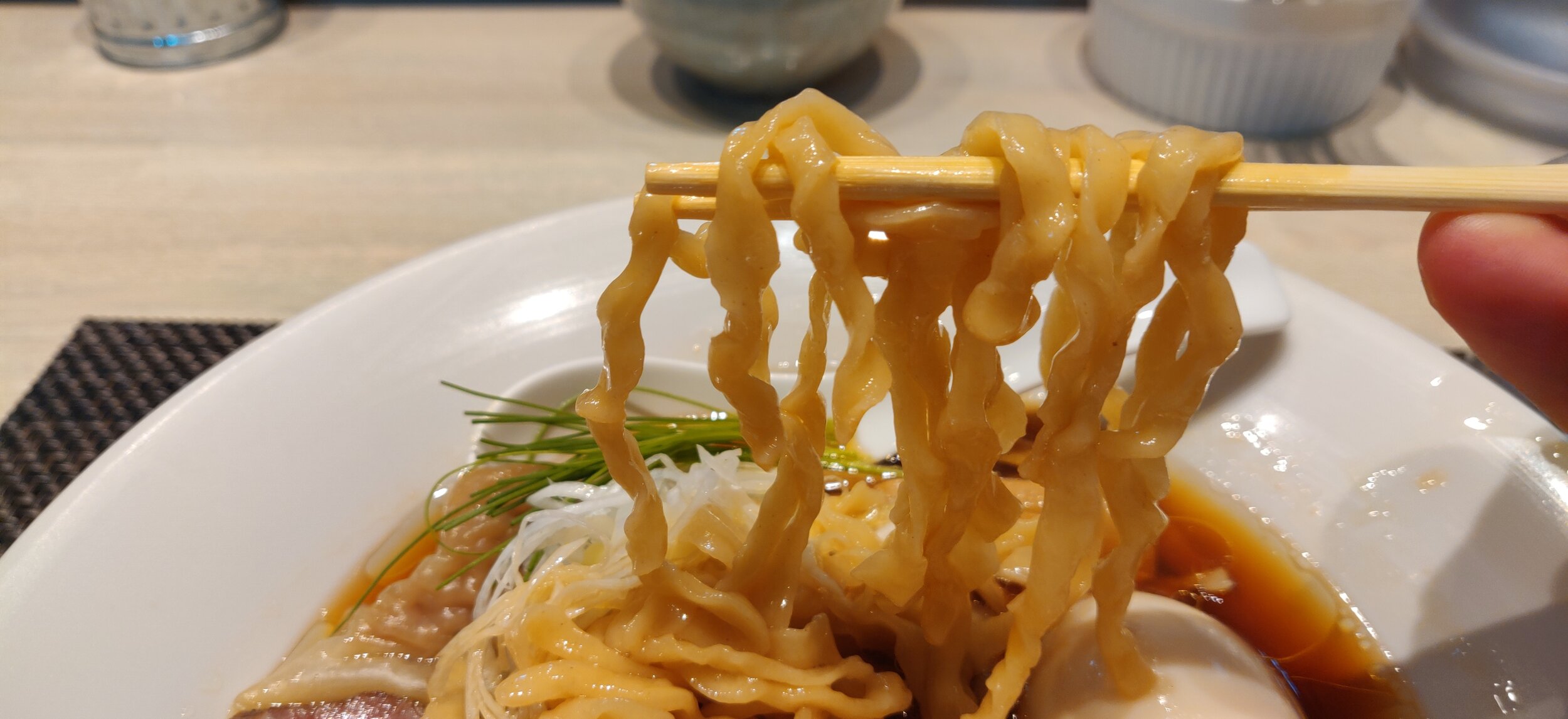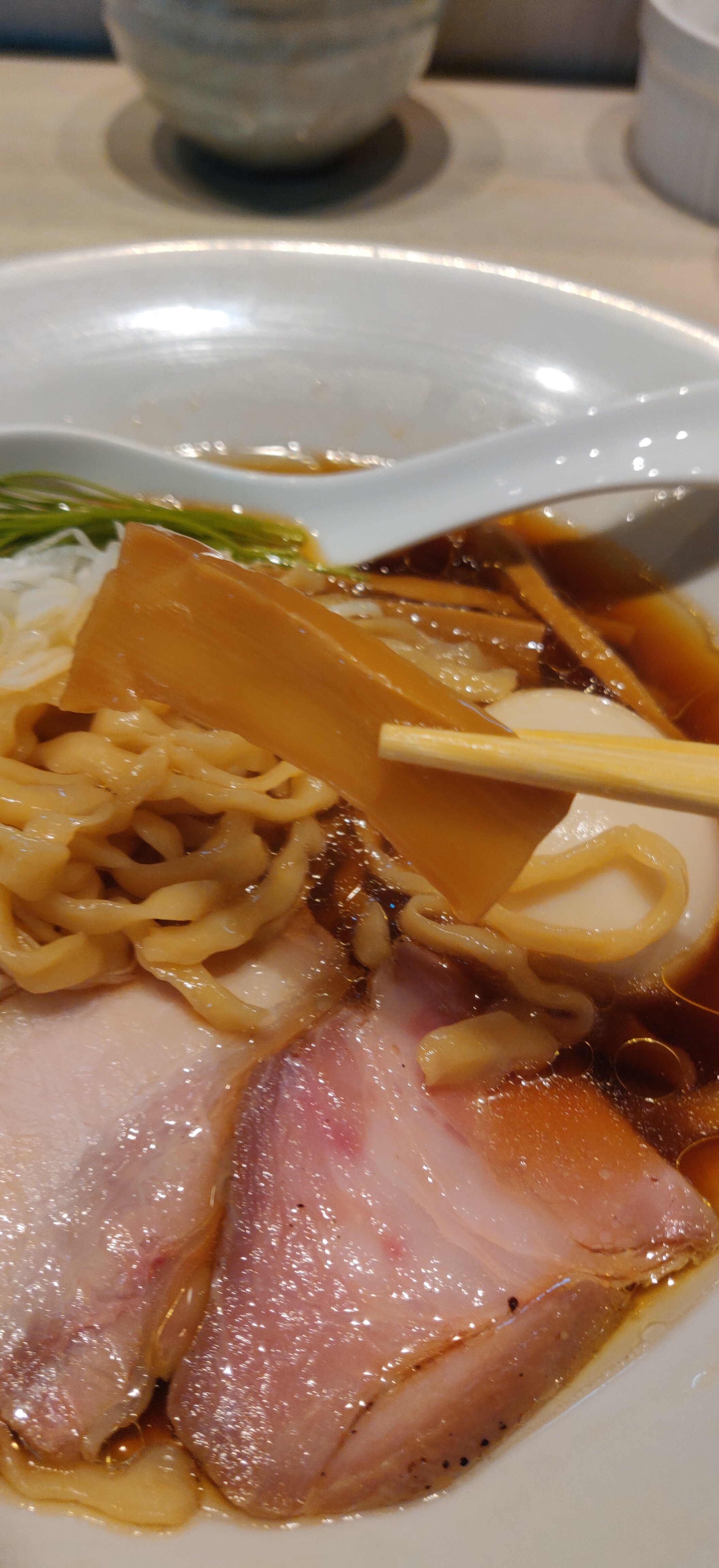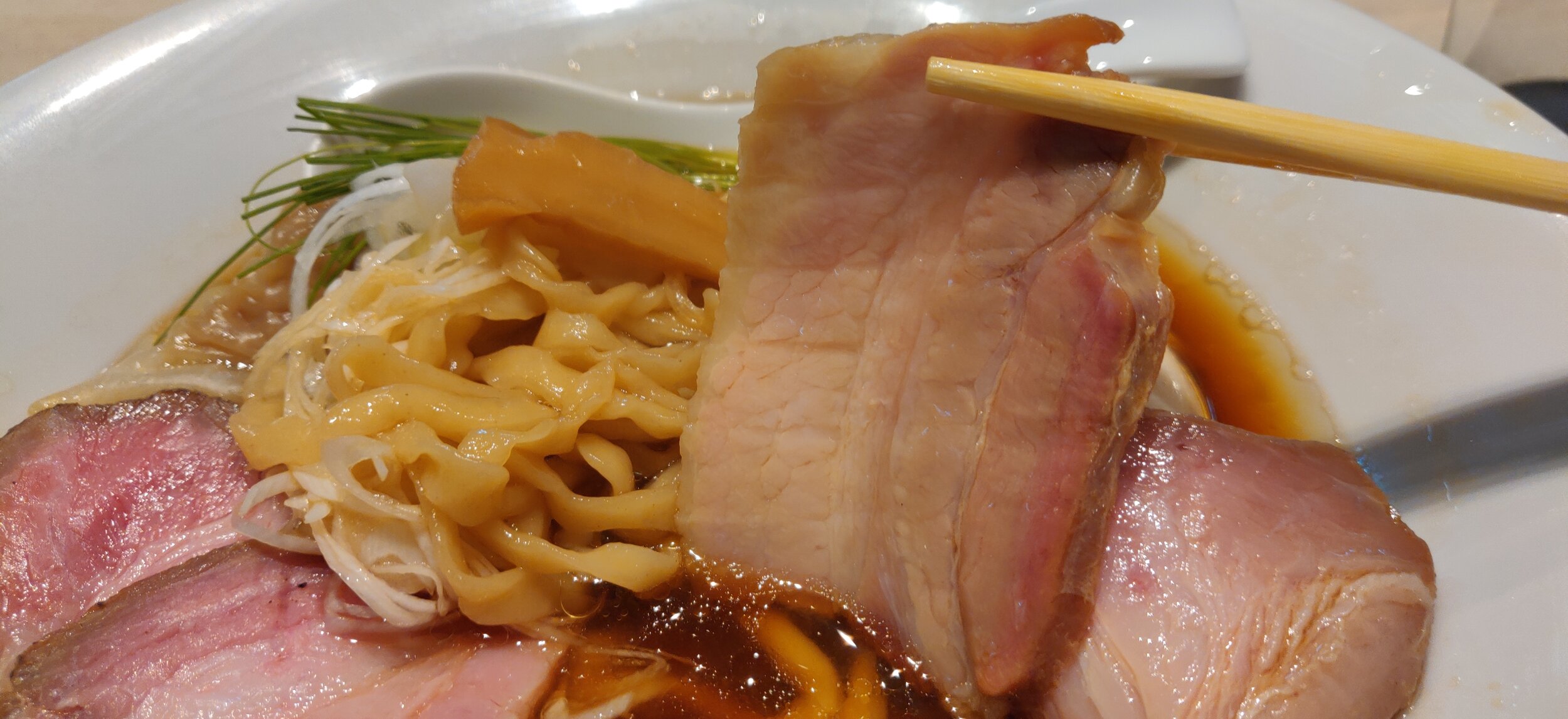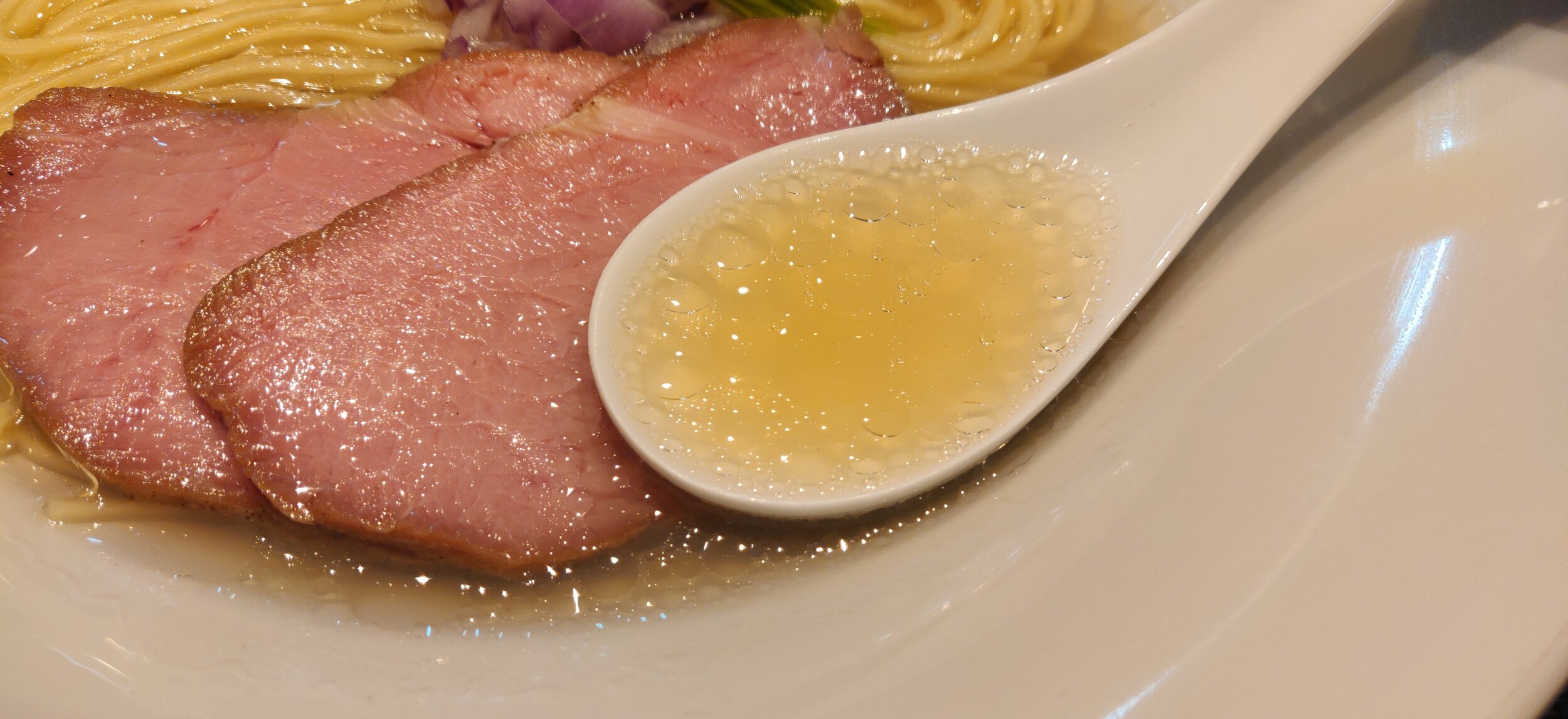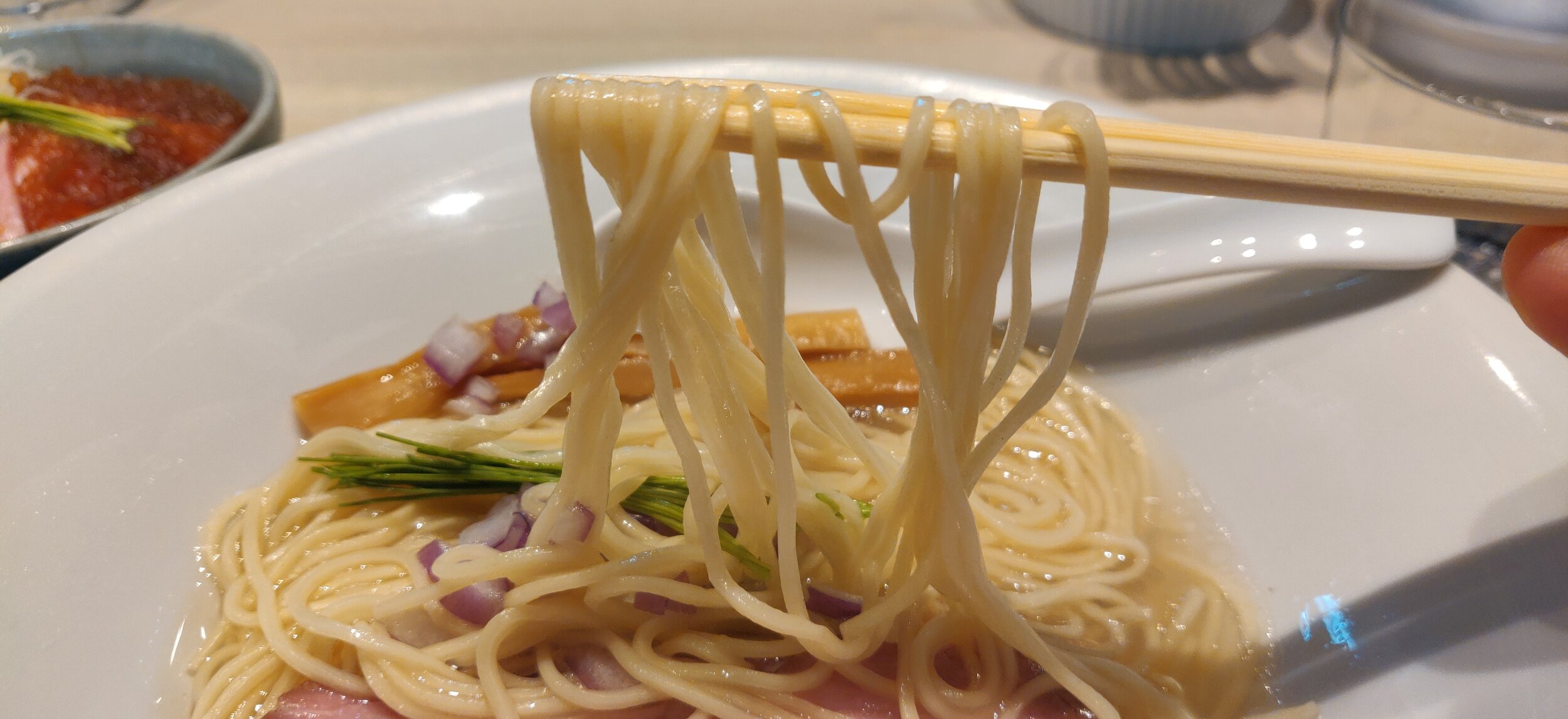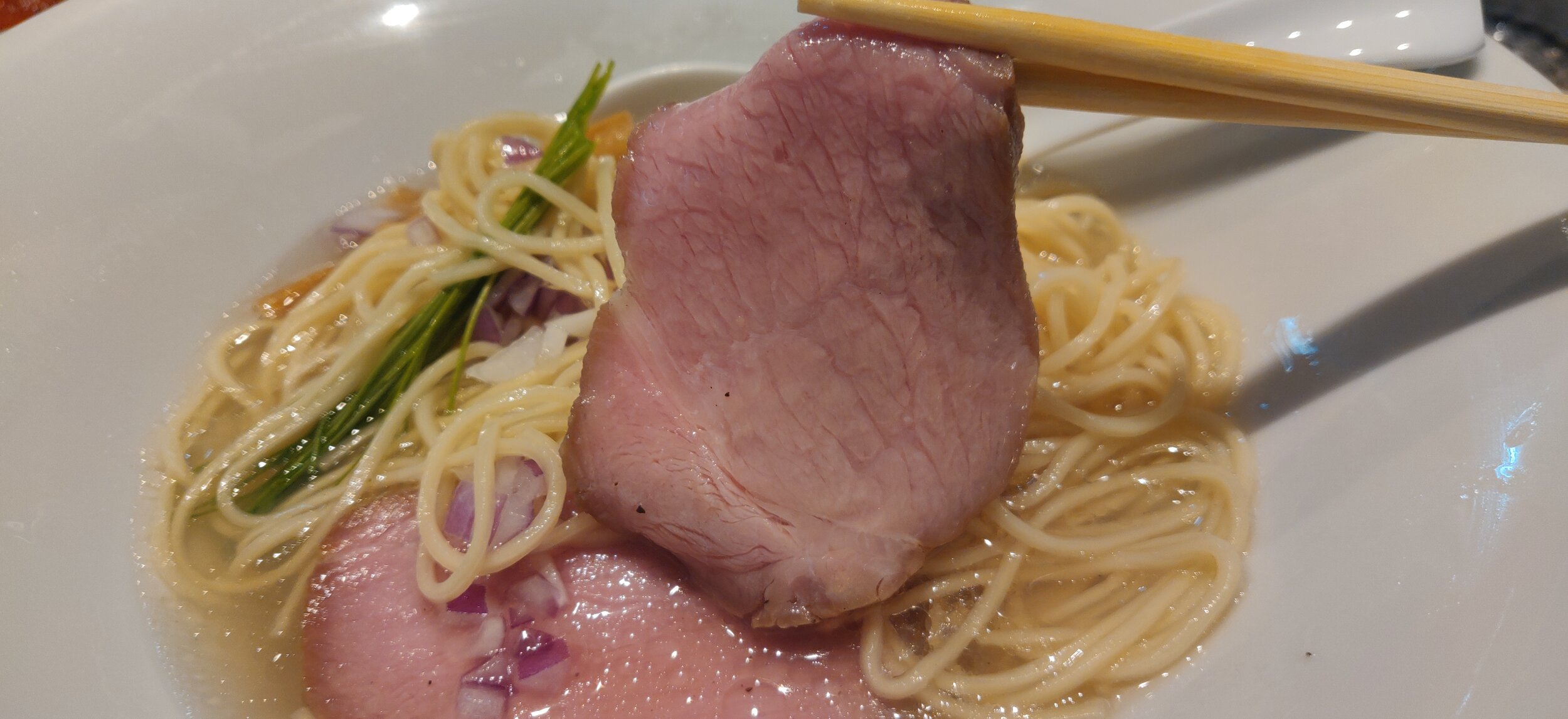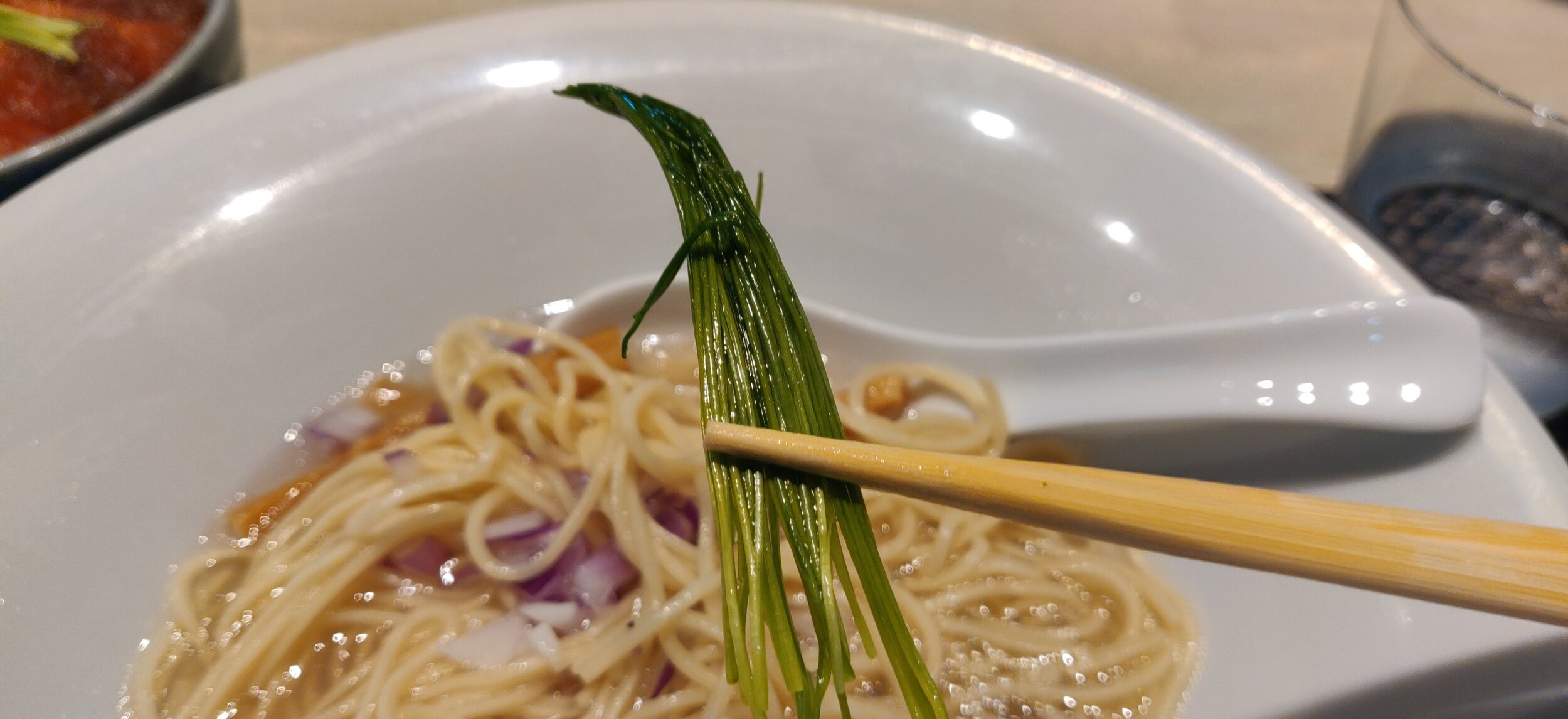Shinjiko Shijimi Chuka Soba Kohaku (宍道湖しじみ中華蕎麦 琥珀); Ramen Newcomer of the Year, Kamata, Tokyo
In the 2019-2020 TRY magazine, or Tokyo Ramen of the Year, a small shop in a quaint back street along the train tracks of south Tokyo won top prize. I honestly had never heard of the shop until I picked up the magazine, but I am definitely glad I did because I’ve already made multiple visits and I’ve enjoyed every menu item I had the pleasure of trying. What makes Kohaku so special is actually in the name, Shinjiko Shijimi. Shinjiko Shijimi is a type of shellfish found in Lake Shinji in Shimane prefecture. They say the Shijimi clams in Shinjiko are one of the best in the world and Kohaku decided to take this decadent ingredient and create a luxurious ramen stock. Here at Kohaku, they source locally farmed Shijimi and a ton of it is used to make their incredible soup. This is definitely a bucket list bowl you have to cross off. Closest station is Zoshiki on the Keikyu main line, which is about a five minute walk, or a good healthy 20 minute walk from the JR Kamata station. Kohaku is closed on weekends so be sure to plan ahead if you’re making a trip there. On weekdays they’re open from 11:30 to 14:30 for lunch and 18:00 to 20:00 for dinner. The hours listed are what was listed during early lock down for Covid so be sure to check google for their hours if you come in post covid. For bowls I had in 2020, this probably takes the cake for top prize, so I definitely recommend making a visit if you’re either here in Tokyo, or visiting in the near future.
At Kohaku, you order at the ticket machine located in the back left corner of the shop. The bathrooms are located in the back corner as well. A staff member will call you in when it’s your turn to sit and will instruct you to purchase your tickets. Until then wait to the left of the store where they set up some chairs and benches. The lines get quite long, even during Covid, so be sure to plan ahead when you make your visit. They will break you 10,000 and 5,000 yen notes for you, but there is a convenience store right across the street so just break your bills there beforehand. Menu here is relatively simple with the pure Shijimi Shio Ramen on the left and a Chicken and Shijimi soup Shoyu Ramen on the right. Right below the top two buttons are the ramen with additional toppings, ramen style corresponding with the color on the top. The button on the left is to include Ajitama soft boiled egg with your order and the one on the right is to get the Tokusei with extra toppings. The white buttons on the third row, starting with the left is extra noodles, 4 meat won tons, 4 slices of chashu, and 2 slices of pork belly chashu. The yellow button on the fourth row corresponds to the rice options, starting with just rice on the far left, a roast pork over rice bowl in the middle, and a pork belly chashu over rice on the right. The far right with the X is a tsukemen option which was unavailable on my visit. The white buttons on the fifth row are side items with an Otsumami appetizer set on the far left, menma bamboo shoots, Ajitama soft boiled eggs, and a separate ticket option to make your ramen Tokusei (not really sure why this is here). On the final row is the drinks starting on the left with beer, than a canned chu-hi or highball, and black oolong tea. The button on the far right is the Omiyage, take home set for a very reasonable 800 yen. I made two visits to Kohaku and I ordered both the Shio and the Shoyu as well as trying both the roast pork over rice and the pork belly chashu over rice bowls. If you don’t feel like reading my full review of the four dishes and just want a quick recommendation then definitely just go for the Shio ramen and a roast pork over rice bowl. If you can’t eat shellfish….well honestly you’re shit out of luck for a lack of better language as both soups contain the Shijimi clams. Also, the pork belly over rice bowl contains a raw egg yolk, so if you can’t handle that, be sure not to order it.
So I guess I’ll start in chronological order and with my first bowl which was the Shoyu. I actually visited Kohaku for the first time with NamaJapanTV. Be sure to check out his channel by the way if you want to see more ramen content. Anyways, Nama ended up ordering the Shio so I decided to vary it up and order the Shoyu. Relative to other ramen shops the Shoyu was definitely top tier. As you can tell from the photo, plating is absolutely gorgeous and probably one of the better presented bowls I’ve ever seen. I went for the Tokusei version which came with all of the extra toppings. Starting with the bottom is the pork loin and pork belly chashu slices with won tons on the top left. On the top right is the menma bamboo shoots and just below that is the Ajitama soft boiled egg. The center mound is a bit of thinly slices Japanese scallions and strands of me-negi which is a thin Japanese negi variety. Toppings all lay on top a bed of temomi, hand massaged noodles. At Kohaku, you can choose between the straight noodle or a chewier hand massaged version. I opted for the hand massage since this option was only available for the Shoyu. The pristine white bowl showcases the plating like a white canvas allowing the shimmering chiyu chicken oil to glean around the edges and on the surface. The dark shoyu hue gradates from dark to light as it reaches the brims of the bowl. The place mat underneath was a nice touch and I’m sure that all these subtle touches added to their debut on the Michelin Guide as Bib Gourmand in 2020.
Soup itself really is phenomenal with the Shoyu Ramen using a chicken and Shijimi blend stock. It’s a bit of a W soup, or double soup, combining a light chicken chintan with the Shijimi based dashi stock. What really made the soup, for me, is the shoyu tare which has a soothing, mellowness to it allowing the delicate flavors of the Shijimi clams to shine through. If it were any more pungent, it would have masked the flavors and hidden the gorgeous flavors of the clam. Chicken is a nice touch though and the chiyu, chicken aroma oil was the perfect addition as the oiliness paired with the shoyu to blend and balance the flavors in a way that Shijimi likely couldn’t do alone. The chicken stock helped give the bowl structure and a base that the Shijimi clams could work off of. Not one soup base could have pulled off this bowl and the contrasting flavors balanced nicely to make a well prepared bowl. Hats off to the chef for finding that perfect ratio because I could see how easily the flavors could be skewed if one stock was portioned more than the other.
As for the toppings, the sous vide pork chashu kept a rosy pink color and had a light seasoning which allowed it to take on more of the flavor profile of the soup. I was a bit conflicted with the chashu as the soup was served so hot that the residual heat kept cooking the chashu that by the end it was a tad chewy. So to combat that, eat your chashu early, in order to have it at the optimal moment. Along the same line of thought, the Tokusei is honestly a bit of an overload here and is better just with the Ajitama soft boiled egg… and maybe the won ton if you’re feeling hungry. Won ton was pre-made (at the shop) so it had a bit of a chew to the skin from some drying, but overall no complaints. Honestly works really well with the Shoyu since the starchiness of the skin plays off of the saltiness of the soup.
The two highlights of the bowl, besides the soup, was definitely the temomi, hand massaged noodles and the thin menegi. Noodles were massaged for a while as I watched him work on them for at least a couple minutes before throwing them in to boil. What results is a chewy, wavy, crinkled effect that soaks up and clings the soup perfectly. The texture has both bounce and chewiness, almost like a steamed mochi, and it was working wonders with that salty, shoyu based tare. Due to the generous use of Chiyu, chicken oil, the thick and wavy noodles worked tremendously well to sort of dampen the extra oiliness of the soup. The menegi is something I don’t see often outside sushi restaurants and the crispness and striking bite really helped to cut through the oily soup mid bites. Combine the menegi with the pork loin chashu and you have a ying and yang of pork and vegetable that I really enjoyed.
During this visit I also had the pleasure of trying the pork belly over rice bowl. As you can see from the photo, the bed of fluffy white rice is covered by a generous serving of pork belly slices. A bit of shoyu based sauce is poured over the pork belly before laying an egg yolk in the center. Sliced Japanese negi finish off the bowl. I actually liked this a lot and it gave a lot of substance to my meal. The refreshing notes of the Japanese negi balanced the fattiness of the pork belly while the egg yolk added a bit of creaminess to the dish. Fresh cooked, fluffy white rice was the perfect starch accompaniment to this amazing dish. You may have recognized that I recommended the other bowl in my intro, but that’s not to say that this wasn’t good. It really was, but the pork loin bowl was just something special that I was absolutely blown away by. If you love yourself a beautiful creamy egg yolk and some melt in your mouth pork belly goodness, you won’t go wrong taking this dish.
Next up is the Shio Ramen which I had on my second visit to this shop. On that first visit, Nama graciously allowed me a couple bites of his noodles and sips of his soup and even with that small sampling I knew I had made the wrong decision. I had to come back to try again and I made it out a couple weeks later for my redemption tour. As I hadn’t yet tried the pork loin chashu bowl either, decided to get a side of that as well. Honestly, the shio ramen here at Kohaku ranks up there as one of my favorite bowls of 2020. To say it’s decadent would be understating it. That’s how ridiculously good this bowl of ramen was. The soup is pure Shijimi and the gentle, yet soothing flavors of the clam was absolutely heavenly. I honestly felt like I was floating with how airy and delicious it was. You get the subtle hints of sweetness as well as the savoriness and salinity that you get with any seafood based broth. But the sweetness really does draw you in and the balance of it with the salty Shio tare is just to die for. I can’t quite pinpoint what he uses for the aroma oil, but it’s definitely not chicken as there is no way you can get that level of sophisticated silkiness with a chicken oil. Whatever it was, it was perfect and it really boosted the overall enjoyment of the soup. Without it, it would have been way to gentle of a soup to stand on for ramen.
Thin noodles were the absolute right choice and I’m glad they don’t offer the temomi version with this soup. Due to how gentle and elegant the flavors are, it would have lost out to a rough, rigid noodle like the hand massaged version. It needed a similar, gentle noodle and this did just that. It soaks up the soup nicely, and while it lacks the wrinkles to cling the soup, it works just fine as is since you really don’t need it to be bringing up too much soup with every slurp; you’ll want to savor this for the end and really concentrate on how well the soup works together. Opted for the regular version, learning my mistake from my first visit and having way too many toppings. I think the simplicity of the bowl as is adds to the enjoyment. If you want a bit more substance, I honestly just recommend supplementing your meal with a rice bowl. One change is that there is no pork belly chashu in the regular for Shio and rightfully so in my opinion. The bold flavors of the pork fat steeping in to the soup would have ruined it and the pork loin was more than enough to give the bowl a meaty punch. In place of the Japanese negi however is diced red onions to go along with the Menegi from the shoyu bowl. The diced red onions was a great touch and the sharpness of the red onions you wouldn’t get from the negi helped give the gentle Shio ramen more character.
Finally I finished my meal off with the pork loin chashu bowl. Like I said in the ramen description, the pork loin was the far superior cut despite it getting a bit tough when it sits in the residual heat of the soup for too long. But alas, that problem is solved in a rice bowl as it doesn’t sit in a pipping hot soup. What really made this dish is the grated daikon radish, ponzu slurry sauce they pour over the pork loin. The sweet and tangy, savoriness of the sauce danced beautifully with the lightly seasoned pork loin slices. The negi and menegi was the perfect accouterments and it was by far the best chashu rice bowl I had in 2020, if not ever. I still dream about this slurry sauce and wish I can get it bottled to bring home so I can pour it over everything.
Kohaku has gotten a ton of awards and accolades in the short 2~ish years they’ve been open and I can’t help but think they’re in for even more. After making their entrance in to the Michelin Guide, I can’t help, but think a star is on the cusp. They could work on maybe getting a bigger shop space and touching it up with some better decor, but if it was just based on the food, they would get a star in an instant. If you’re looking for that sort of impactful, can’t get it outside of Japan type ramen, Kohaku is definitely the shop for you and needs to be on your travel itinerary or ramen hit list for those living here. I honestly can’t say enough about this shop and hope you all make a visit here soon as well. If you do, be sure to let me know in the comment section below or tag me in your photos over on instagram @ramenguidejapan. Cheers!


